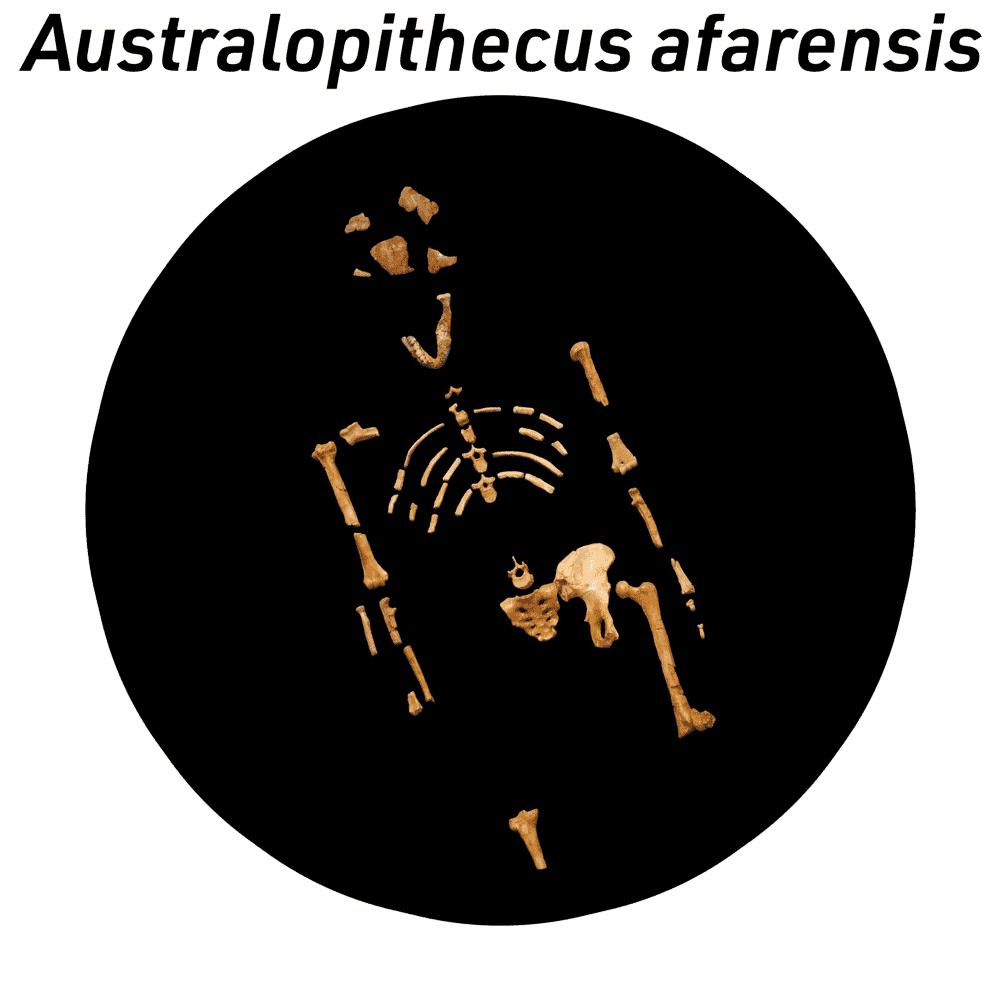Virtual lab: Australopithecus afarensis pelvis
The "Lucy" skeleton, numbered AL 288-1, is one of the most well-known discoveries in the history of human origins research. Found in 1974 by Tom Gray and Donald Johanson at Hadar, Ethiopia, the individual represented by this partial skeleton lived around 3.2 million years ago. Around 40 percent of the skeleton was recovered, including parts of the lower limb, upper limb, thorax, and mandible. Scientists shortly after its discovery denoted these among the remains attributed to the species Australopithecus afarensis.

The pelvis is rarely preserved as a fossil, but several partial pelves are available from australopithecines, including the “Lucy” skeleton and several partial pelves from later South African sites. The pelvis consists of three bones: the sacrum, which lies at the bottom of the spine and is composed of several fused vertebra-like elements, and the two os coxae, or hip bones. In early hominids, both the sacrum and hip bones are relatively short compared to apes. The upper portion of each hip bone, called the ilium, is short and curved compared to the long, flattened ilium of chimpanzees and other apes. The curvature places the attachment of the quadriceps muscle closer to the front of the body, allowing the muscle greater leverage in pulling the femur forward in an upright posture.
Although the ilia of Australopithecus were short from top to bottom compared to a chimpanzee, they extend more broadly to the side, resulting in a pelvis that is very broad overall. Lucy's pelvic width was within the range of today's women, despite her very small body size. As a result, her body was differently shaped from recent people very broad for its short height.
The AL 288-1 skeleton preserves most of the left os coxa together with the sacrum. This virtual lab includes those parts. For comparison, a pelvis of a chimpanzee and of a modern human are both included.
As you examine the pelvic morphology of Au. afarensis, consider the following:
- What features, if any, does the AL 288-1 pelvis share with the chimpanzee but not with the human pelvis?
- How does the shape of the pelvic inlet compare in the human and the AL 288-1 pelvic remains?
- Many fossils are less complete fragments than the AL 288-1 pelvic remains. Which parts of the pelvis enable you to test whether the individual was a biped like humans? Which parts are less informative?
Materials in this lab
- The original AL 288-1 fossil material is curated at the National Museum of Ethiopia, Addis Ababa. The model in this virtual lab uses data obtained from a cast in the Biological Anthropology collection at the University of Wisconsin-Madison.
- The model of the human pelvis is from the BodyParts3D collection and available under a Creative Commons license by The Database Center for Life Science, Japan. The license is CC Attribution-Share Alike 2.1 (CC-BY-SA). The original, full-resolution models can be found on the BodyParts3D website.
- The model of the chimpanzee pelvis is based on data from an osteological specimen in the collection of the University of the Witwatersrand, South Africa.
Back to full list of virtual labs